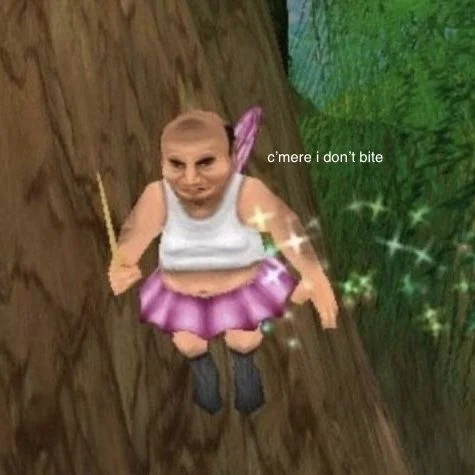In the vast expanse of the internet, there exists a realm of content that goes beyond the ordinary, delving into the eerie and the unsettling. Among the many niches of online fascination, “cursed images” have captured the collective curiosity of netizens worldwide. These images, characterized by their eerie and uncanny nature, have sparked intrigue and speculation about their origin, purpose, and the unsettling feelings they evoke. One particular subset of this phenomenon has emerged prominently – the enigmatic world of cursed Russian images. In this article, we’ll dive into the depths of this peculiar subculture, exploring its origins, themes, and the psychological allure that keeps us coming back for more.

The Concept of Cursed Images
Cursed images are a genre of internet content that defies conventional aesthetic norms and subverts the viewer’s expectations. They typically feature mundane or everyday objects and situations, but they are presented in a way that triggers an unsettling or eerie feeling. These images often walk the fine line between the comically absurd and the deeply unsettling, leaving viewers with a sense of unease.
The term “cursed image” gained popularity on platforms like Tumblr and Reddit, where users shared images that triggered a visceral reaction. While the concept can be traced back to ancient folklore and superstitions surrounding cursed objects, the digital era has given this phenomenon a new dimension, allowing it to spread rapidly across the internet.
The Russian Connection
Within the realm of cursed images, a subcategory that has garnered significant attention is that of “cursed Russian images.” These images are characterized by their distinct visual elements, often featuring run-down settings, odd juxtapositions, and a general sense of decay. The term “cursed Russian images” likely originated from the stereotypical portrayal of Russia in Western media as a place of mystery, intrigue, and danger.
However, it’s important to note that the term is more of an internet meme rather than a reflection of reality. These images are not representative of Russia as a whole but are rather a creative expression of the online community’s fascination with the unknown and the eerie.
Themes and Characteristics
Cursed Russian images adhere to certain themes and characteristics that set them apart from other forms of unsettling content. Some of the common themes include:
- Decay and Abandonment: Many cursed Russian images feature decaying buildings, abandoned factories, and desolate landscapes. These settings evoke a sense of desolation and abandonment, stirring emotions that range from nostalgia to anxiety.
- Bizarre Combinations: These images often combine seemingly unrelated elements in unusual and surreal ways. Doll parts in unexpected places, distorted faces, and surreal landscapes contribute to the overall uncanny nature of the images.
- Distorted Reality: Cursed Russian images often distort reality by manipulating colors, proportions, and perspectives. This distortion adds to the disconcerting feeling these images provoke.
- Unsettling Characters: Figures or characters within cursed Russian images can be particularly disturbing. Whether intentionally altered or simply captured at an odd moment, these characters contribute to the overall sense of unease.
- Minimal Context: One of the defining characteristics of cursed images is the lack of context. Viewers are left to interpret the images without any background information, allowing their imagination to run wild.
Psychological Allure
The appeal of cursed Russian images lies in their ability to trigger a range of psychological reactions. The uncanny valley phenomenon, which describes the discomfort we feel when faced with human-like entities that are almost but not quite real, plays a significant role in our reaction to these images. The surreal and distorted elements of cursed images place them squarely within the uncanny valley, causing our brains to perceive them as both familiar and unfamiliar, thus creating a sense of cognitive dissonance.
Furthermore, the ambiguity and lack of context in cursed Russian images prompt our brains to fill in the gaps with our own interpretations. This engagement of our imagination adds an interactive aspect to viewing these images. The discomfort and unease that result from these psychological processes might seem counterintuitive, but they are a driving force behind our continued fascination with the genre.
Artistic Expression and Cultural Commentary
While cursed Russian images primarily aim to evoke unsettling feelings, they also serve as a form of artistic expression and cultural commentary. Much like other forms of art, these images challenge societal norms and aesthetic expectations. They subvert the conventional ideas of beauty and order, encouraging viewers to question their perceptions and engage with discomfort in a controlled environment.
Moreover, these images can be interpreted as reflections of our anxieties and fears as a society. The decaying landscapes, distorted figures, and eerie atmospheres can be seen as symbolic representations of the uncertainties and chaos that pervade our world. In this sense, cursed Russian images become a visual manifestation of our collective unease and a way to confront our fears in a safe and controlled manner.
Conclusion
The world of cursed Russian images is a captivating subculture within the larger universe of internet phenomena. Rooted in the fascination with the eerie and the uncanny, these images challenge our perceptions, trigger psychological responses, and serve as a form of artistic expression. While the term “cursed Russian images” may be more of an internet meme than an accurate representation of Russia, it has given rise to a unique genre of online content that continues to intrigue, disturb, and captivate audiences around the world. As we navigate the vast expanse of the internet, these images remind us of the boundless creativity that thrives in the digital realm, inviting us to confront our discomfort and explore the mysteries that lie beyond the ordinary.
